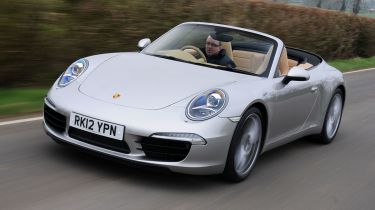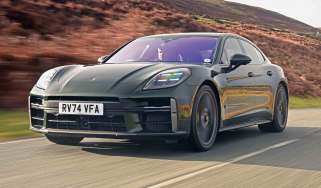Porsche 911 Cabriolet
We hit the road in Carrera S version of the all-new soft-top

The 911 Cabriolet should no longer be considered the soft option next to the coupe. You can only tell the two apart at the limit on track. If anything, dropping the elegant roof to hear the exhaust note better makes this the more dramatic car. There’s only one problem: the Boxster S is almost as fast and handles just as sweetly, yet costs over £40,000 less.
Convertibles always mean compromises, right? We’ve driven the new Porsche Carrera S Cabriolet on UK roads for the first time to see if this is still true.
The hood is made up of four composite panels, with fabric stretched over the top, and has an identical silhouette to the coupe’s roof. A magnesium frame means it’s lighter than most soft-tops, while the composite panels improve refinement. The roof can raise or lower itself in 13 seconds at speeds of up to 35mph.
Under the bodywork is the same steel and aluminium chassis as the coupe, with a longer wheelbase, wider track and shorter overhangs than the previous 911. This car is also 60kg lighter than before, and looks more dramatic and muscular than any other 911 Cabriolet to date.
Drop the roof and you can enjoying the wonderful multi-layered sound from the sports exhaust (a £1,772 option). The 394bhp 3.8-litre flat-six engine provides speed to match the noise: 0-62mph takes only 4.5 seconds, or 4.3 seconds with the £1,376 Sport Chrono package, which adds launch control.
Plant your right foot and the surge of acceleration is sensational, even from low revs. However, the difference between the 345bhp Carrera and 394bhp Carrera S tested here isn’t as big as you’d think.
The new electro-mechanical power-steering is not as communicative as the previous hydraulic set-up, yet the 911 still feels razor-sharp. Any differences in handling between the coupe and convertible only become apparent when you push right to the limit on a race track.
Adjustable suspension that can be switched from supple to rock-hard means you can drive this car every day, on motorway trips or B-road blasts. And with the roof down, an electric wind deflector ensures buffeting is suppressed, even at up to 70mph.









